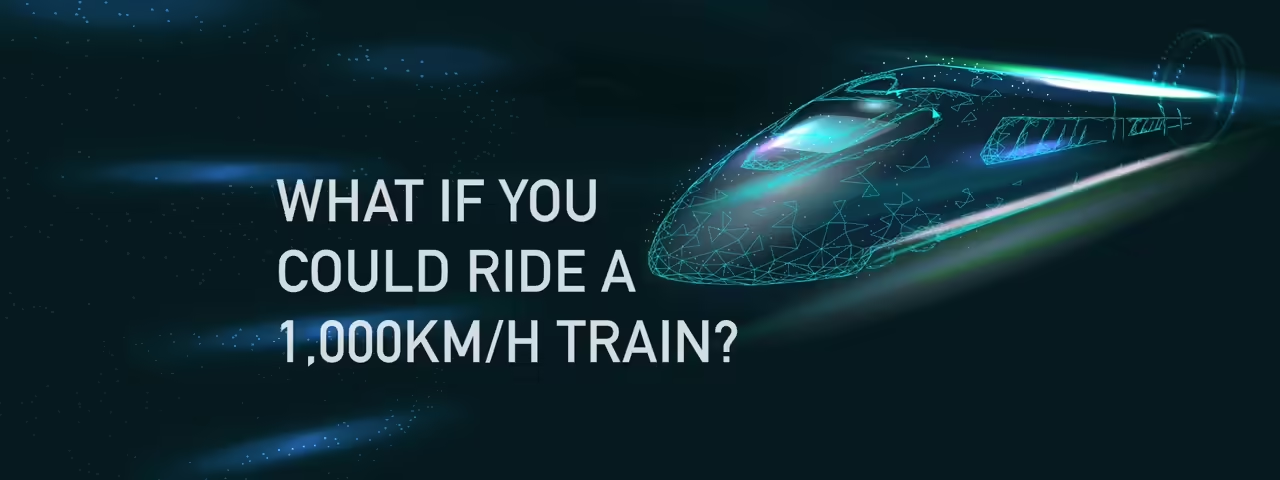
High-speed trains have become a cornerstone of modern transportation, revolutionizing the way we traverse vast distances. Among these marvels of engineering, one particular innovation stands out—the world’s fastest train.
The Significance of High-Speed Trains: A Brief Overview
As urbanization continues to shape the landscape of our cities and the demands for efficient transportation rise, high-speed trains have emerged as a key player in meeting these challenges. These trains, capable of reaching remarkable speeds, offer a compelling alternative to traditional modes of transport, such as automobiles and airplanes.
Enhancing Connectivity and Reducing Travel Time
One of the primary advantages of high-speed trains lies in their ability to enhance connectivity between major urban centers. By significantly reducing travel time, these trains make it feasible for individuals to live in one city and work in another, fostering economic growth and regional development. The impact of high-speed rail on reducing congestion on highways and at airports cannot be overstated, contributing to a more sustainable and streamlined transportation ecosystem.
Technological Advancements Driving Innovation
The world’s fastest train, at the pinnacle of high-speed rail technology, represents the culmination of years of research and innovation. Cutting-edge engineering, advanced materials, and groundbreaking propulsion systems converge to create a mode of transportation that pushes the boundaries of what was once considered possible. The introduction of magnetic levitation (maglev) technology, allowing the train to float above the tracks, exemplifies the technological prowess harnessed to achieve unprecedented speeds.
Environmental Considerations: A Sustainable Option
As the global community grapples with the challenges of climate change, the environmental impact of transportation is under scrutiny. High-speed trains, with their efficiency and lower carbon footprint compared to traditional modes, present a more sustainable option for long-distance travel. The reduction in greenhouse gas emissions and reliance on fossil fuels underscores the importance of incorporating high-speed rail into comprehensive transportation strategies aimed at mitigating the effects of climate change.
Looking Ahead: The Future of High-Speed Rail
The introduction of the world’s fastest train marks a significant milestone, but it also invites speculation about the future of high-speed rail. As technology continues to advance, we can anticipate further innovations, increased efficiency, and broader integration into global transportation networks. The journey into the realm of high-speed trains promises not only speed but also a transformative impact on how we connect, commute, and consider the possibilities of transportation in the years to come.
A Journey Through Time: The History of High-Speed Trains
High-speed trains have come a long way since their inception, evolving from ambitious concepts to the sophisticated marvels of modern transportation we see today. The history of high-speed trains is a compelling narrative that intertwines technological innovation, engineering brilliance, and a relentless pursuit of speed and efficiency.
The Pioneering Years (1960s-1970s): Shinkansen and TGV
The origins of high-speed rail can be traced back to Japan in the 1960s with the introduction of the Shinkansen, commonly known as the “bullet train.” The Shinkansen, launched in 1964, revolutionized train travel with its streamlined design and unprecedented speeds. Meanwhile, in France, the Train à Grande Vitesse (TGV) made its debut in the 1970s, showcasing the potential of high-speed rail in Europe.
Maglev Dreams (1980s-1990s): Transcending Tracks
The 1980s and 1990s witnessed a shift towards magnetic levitation (maglev) technology. Maglev trains, which use powerful magnets to lift and propel the train above the tracks, offered the promise of even higher speeds and smoother rides. Germany and Japan took the lead in developing maglev prototypes, opening up new possibilities for the future of high-speed transportation.
Global Expansion (2000s-Present): The High-Speed Boom
The 21st century has been characterized by a global boom in high-speed rail projects. Countries around the world have invested heavily in expanding and upgrading their high-speed rail networks. China, in particular, has emerged as a leader, with an extensive network that connects major cities and reaches remarkable speeds. Spain, Italy, and other European countries have also expanded their high-speed rail infrastructure, fostering regional connectivity.
Technological Advancements: Beyond Speed Limits
Advancements in technology have been instrumental in pushing the boundaries of speed and efficiency. Improved aerodynamics, lighter materials, and innovative propulsion systems have contributed to achieving ever-higher speeds while ensuring safety and comfort for passengers. The development of variable-gauge systems and interoperability between different rail networks has further enhanced the versatility and reach of high-speed trains.
Challenges and Triumphs: Overcoming Obstacles
The history of high-speed trains is not without its challenges. Overcoming issues such as land acquisition, technical hurdles, and financial constraints has required perseverance and collaboration between governments, engineers, and the private sector. Yet, the triumphs have been numerous, with high-speed rail becoming a symbol of progress and a catalyst for economic development.
Technical Features of the World’s Fastest Train
The title-holder for the world’s fastest train represents the epitome of cutting-edge technology and engineering prowess. Its design, technological innovations, and specifications not only push the boundaries of what was once considered feasible but also set a new standard for high-speed rail. Let’s delve into the technical features that make this train the fastest on the planet.
Aerodynamic Excellence: Shaping Speed
The exterior design of the train is a testament to aerodynamic excellence. Sleek, streamlined contours minimize air resistance, allowing the train to slice through the atmosphere with minimal drag. The emphasis on aerodynamics is critical to achieving and sustaining the extraordinary speeds that characterize this high-speed marvel.
Magnetic Levitation (Maglev) Technology: Defying Gravity
At the heart of its speed lies the implementation of magnetic levitation technology. Unlike traditional trains that rely on wheels and tracks, maglev technology allows the train to levitate above the tracks, eliminating friction and enabling speeds that were once thought impossible. The marriage of powerful magnets and advanced control systems results in a smooth, efficient, and near-silent ride.
Advanced Propulsion Systems: Pushing Boundaries
The train is equipped with state-of-the-art propulsion systems that propel it to unparalleled speeds. Whether it employs electromagnetic propulsion, linear induction motors, or other cutting-edge technologies, these systems harness the power needed to accelerate the train to its remarkable top speed while ensuring optimal energy efficiency.
Lightweight Materials: Maximizing Efficiency
To further enhance performance, the train’s construction incorporates lightweight yet durable materials. Advanced alloys, carbon fiber composites, and other high-tech materials are strategically employed to reduce weight without compromising structural integrity. The use of lightweight materials contributes to energy efficiency, acceleration capabilities, and overall operational efficiency.
Precision Control and Safety Systems: Ensuring Passenger Security
With speed comes the critical need for precision control and safety measures. The train is equipped with advanced control systems that monitor and adjust various parameters in real-time. Automated safety features, emergency braking systems, and redundant fail-safes are integrated to ensure the utmost safety for passengers and crew, providing peace of mind at extraordinary speeds.
Variable Gauges and Interoperability: Seamless Connectivity
In pursuit of global connectivity, the train incorporates variable gauge systems, allowing it to seamlessly transition between different rail networks. This interoperability enhances the train’s versatility, enabling it to traverse international routes and connect diverse regions with varying rail standards.
Sustainable Features: A Green Approach to Speed
In alignment with contemporary environmental concerns, the train incorporates sustainable features. Energy-efficient systems, regenerative braking, and eco-friendly materials contribute to a reduced carbon footprint. The commitment to sustainability aligns with the evolving expectations of environmentally conscious transportation.
Evolution of Maglev Technology: Unveiling the Magnetic Levitation Marvel
Magnetic levitation, or maglev, technology represents a groundbreaking advancement in the realm of high-speed transportation. The principles governing maglev not only defy traditional methods of train propulsion but also play a pivotal role in propelling the world’s fastest train to extraordinary speeds. Let’s explore the development of maglev technology and how its fundamental principles contribute to the exceptional velocity of this cutting-edge train.
The Genesis: Origins of Maglev Technology
The roots of maglev technology trace back to the mid-20th century, with early experiments and prototypes emerging in various parts of the world. The concept was revolutionary: instead of relying on wheels and tracks, these trains would hover above the rails through the power of magnetic repulsion, eliminating friction and allowing for unprecedented speeds.
Electromagnetic Repulsion: Defying Gravity
At the core of maglev technology is the principle of electromagnetic repulsion. The train is outfitted with powerful magnets, typically superconducting electromagnets, that generate a magnetic field. Simultaneously, the guideway or track is embedded with a corresponding magnetic polarity. According to the laws of physics, like magnetic poles repel each other. In the case of maglev, this repulsion force effectively lifts the train above the tracks, creating a cushion of air that eliminates physical contact and friction.
Achieving Levitation: Superconductors and Magnetic Fields
To achieve effective levitation, the magnets on the train and the track must exhibit superconductivity. Superconductors, materials that can conduct electricity without resistance when cooled to extremely low temperatures, enable the creation of intense magnetic fields. This superconducting property ensures a stable levitation gap between the train and the track, allowing for a smooth and controlled ride.
Propulsion and Guidance: The Linear Induction Motor
Maglev trains utilize a linear induction motor for propulsion and guidance. As the train levitates, the motor generates a magnetic field that interacts with coils along the track. This interaction propels the train forward with remarkable force and precision. The absence of physical contact between the train and the track, in contrast to traditional wheel-on-rail systems, results in minimal friction, allowing for higher speeds and increased energy efficiency.
Speeding to the Future: Maglev and the Fastest Train
The exceptional speed of the world’s fastest train is intricately tied to the principles of maglev technology. By eliminating the friction and limitations imposed by traditional wheel-and-rail systems, maglev trains can achieve speeds that surpass those of their conventional counterparts. The absence of physical contact not only allows for smoother acceleration but also reduces wear and tear, contributing to the longevity and efficiency of the system.
Advantages and Challenges: The Maglev Equation
Maglev technology brings numerous advantages, including reduced maintenance, quieter operation, and the potential for higher speeds. However, challenges such as the high energy consumption associated with maintaining superconductivity, infrastructure costs, and the need for dedicated guideways must be addressed to fully realize the potential of maglev on a global scale.







